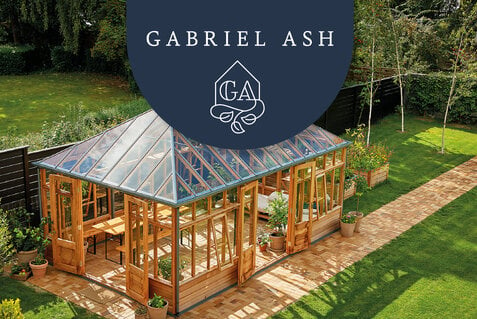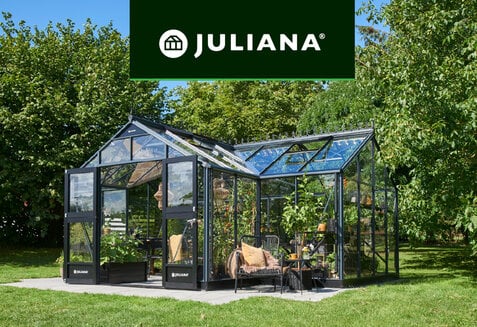The Greenhouse Floor
Dreaming of a greenhouse, but not sure what to place your greehouse on? In this guide you will find inspiration on what kind of flooring you can have in your greenhouse.
By Lars Lund
It's often said that the lawn represents the floor of the garden. However, having a floor of grass in the greenhouse might not be the most practical choice. But does the greenhouse even need a floor beyond the soil it stands on? That depends on how you use your greenhouse.
Greenhouses have evolved from being solely used for crop cultivation to spaces where people relax and unwind. In the past, greenhouses where hidden in the garden. Today, however, greenhouses are placed more central as outdoor and indoor life merge more and more. Simultaneously, the greenhouse structures have increased in size, both in terms of area and height. Capillary boxes were invented, allowing for a flexible greenhouse interior.
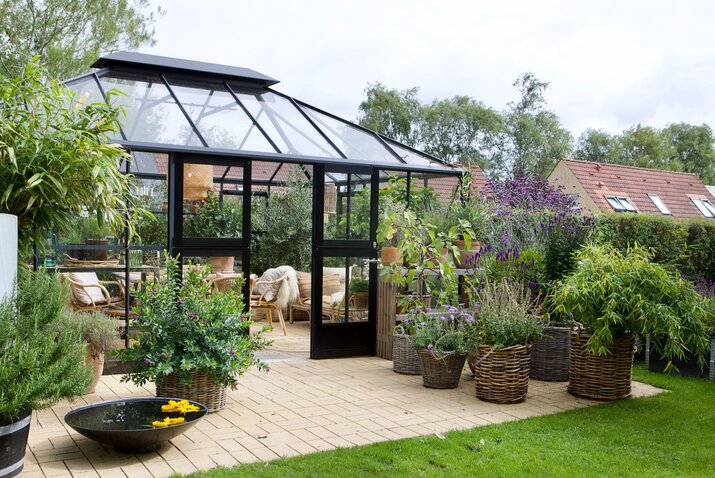
Photo: Grøn Kommunikation ©
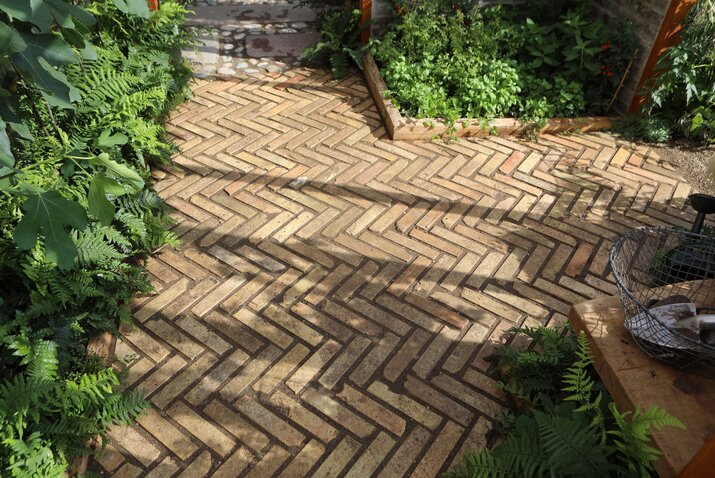
A classic herringbone pattern created with stones on edge.
Photo: Grøn Kommunikation ©
Different Perspectives
The choice of the greenhouse floor also reflects different personal perspectives. Some greenhouse enthusiasts would never consider cultivating plants in plastic bags or raised beds. They prefer working with garden soil. In fixed beds, drip irrigation can be a great help to ease the watering process, and the roots usually develop better due to the available space, enabling them to reach deeper for the earth's beneficial minerals. This leads to fewer plant diseases and tastier crops.Whether the cultivation in fixed beds is the better choice in general, is debatable, but it provides the best conditions for the plants. However, when choosing the greenhouse floor, there are other aspects to consider. It is a good idea to reflect upon your preferred cultivation method and the number of plants you wish to accommodate as well as other aspects that might influence your choice.
Greenhouse Enthusiasts
If your primary reason for having a greenhouse is to create a cosy garden space with a few decorative plants and a fireplace, choosing a floor with a solid surface is the obvious choice. Having a solid floor in the greenhouse does not necessarily mean sacrificing the option of cultivating many plants. You can cultivate plants in capillary boxes and pots, containers, or buckets. Additionally, you can leave a few holes in the ground, where you can for example plant an olive tree, a fig tree, or plants that can withstand winter conditions.
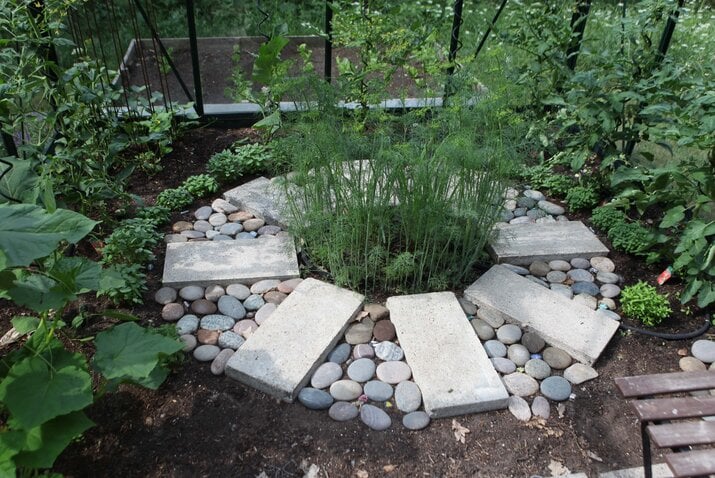
A greenhouse with fixed beds and decorative flooring.
Photo: Grøn Kommunikation ©

In this greenhouse, there is space for both capillary boxes and a table.
Photo: Grøn Kommunikation ©
Tiles, Bricks, and Paving Stones
The classic flooring in a greenhouse consists of tiles, concrete paving stones, or bricks. Decorative stones can be laid to enhance the appearance of cement tiles, or cobblestones can be placed around each tile.Bricks are perhaps the most preferred flooring choice. The bricks can be arranged using different technics to achieve various looks and designs. Often, half-brick or herringbone patterns are preferred. The stones can be laid flat or on edge. The latter provides a stronger flooring but requires more stones per square meter.
The Installation Process
The most significant task is not laying the stones but the groundwork. As with many other projects, preparation is crucial. The substrate must be stable and even.First, remove the topsoil layer. Then prepare the ground by using a plate compactor, which can be rented from a hardware store, or a garden roller.For a floor without heavy loads, it's optimal to lay 15-20 cm of stabilized gravel without clay. Again, the plate compactor is used.Finally, use 3-4 cm of grit sand with a particle size of 1-8 mm, upon which the bricks are laid. Avoid a thicker layer of sand, as it can result in an uneven floor.
Avoid Using Landscape Fabric
It might be tempting to use landscape fabric under the bricks, but this causes the stones to shift and does usually not actually prevent the growth of weed between the bricks. Remember that you will need about 20% more gravel and sand than calculated, as they shrink when compressed.After laying the flooring, fill the joints by sweeping dry sand into them. If using clay bricks, make sure to use stone dust or weed-resistant sand intended for clay bricks, otherwise it might cause discolorations.Another piece of advice is to position the stones upright alongside the edges. This will prevent shifting, especially if the stones are positioned under the base.Using hard-fired stones or what is called “marine clay tiles” results in minimal maintenance. Ordinary bricks absorb more moisture, leading to algae growth.If you wish to instal concrete tiles you can follow the same instructions. If you desire a different surface on top of the tiles, laying beach sand can create a unique ambiance. Today, there is also a wide range of decorative plastic carpets available.
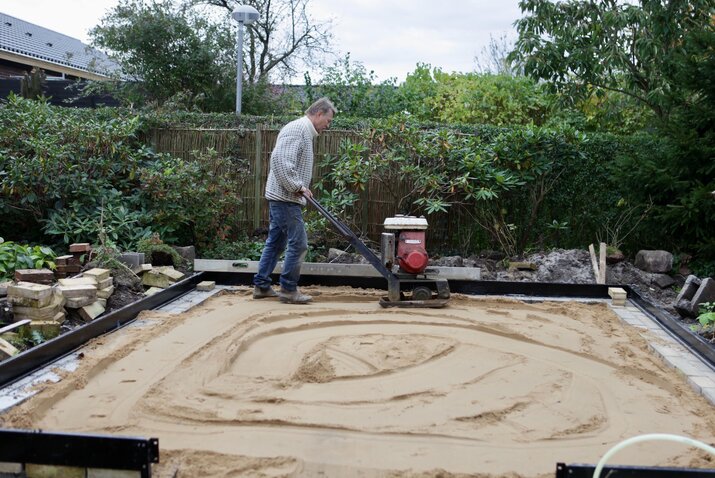
A solid base is crucial when constructing the greenhouse floor.
Photo: Grøn Kommunikation ©
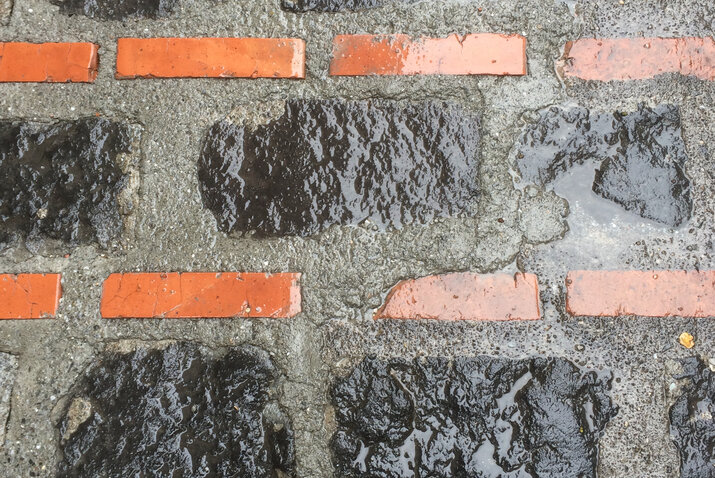
There are many ways to create unique flooring. Here, a mix of concrete, cobblestones, and bricks.
Photo: Grøn Kommunikation ©
Soil Enthusiasts
Fixed beds are the simplest solution for the greenhouse. Traditionally, the greenhouse is set-up with a central aisle with beds on either side, but in the end, it is up to your imagination to create pathways that allow optimal access to the beds and your plants.If you create a central aisle, you can lower the aisle to create a frost-free cellar. Place one or two foundation blocks on top of each other along the entire length of the aisle and place boards or tiles on top of the foundation blocks.
Insulated Floors
There are very different opinions on whether a greenhouse floor should be insulated. In general, insulating the floor does not make a lot of sense. During winter, the soil emits heat, and even though it is not a lot of heat, it is better that it can find its way up to the greenhouse, instead of keeping it out with an insulating layer. Some even recommend placing a cement pipe vertically in each corner of the greenhouse, allowing heat to be drawn from the ground.
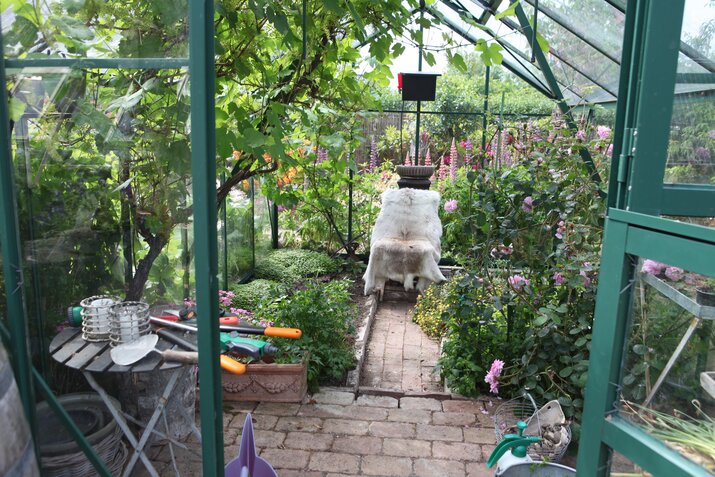
In the small 10 sqm greenhouse, there is space for both leisure and fixed beds
Photo: Grøn Kommunikation ©
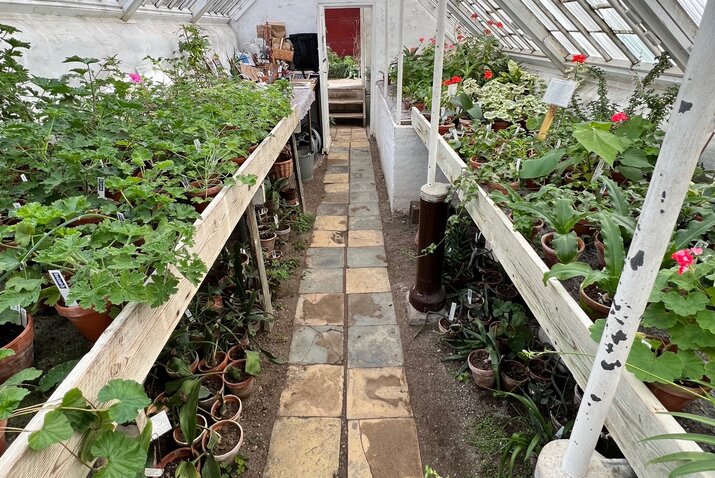
For some, the greenhouse is solely about producing plants for the living room or conservatory.
Photo: Grøn Kommunikation ©
Solid Greenhouse Floorig VS. Fixed Beds
Solid Greeenhouse Flooring
Advantages
- Stone flooring absorbs the sun's heat, evening out temperature fluctuations between day and night.
- It is possible to cultivate in capillary boxes and pots and having the option of garden furniture at the same time.
- It is easier to rearrange the set-up of your greenhouse.
- It is easier to replace the soil.
Disadvantages
- Pots require more frequent watering, and overall, water consumption is higher when cultivating in any container.
Fixed Beds in the Greenhouse
Advantages
- Better growth conditions for the plants, especially for plants with deep roots.
- Less water consumption and less use of fertiliser required.
- Fewer plant diseases.
- Possibility to create a hotbed with horse manure.
Disadvantages
- Slightly more challenging soil replacement.
- Less options for adding garden furniture to the greenhouse as an outdoor space.
- Sick or infested plants in fixed beds are not as easy to isolate from other plants. Plants growing in pots can easily be removed from the greenhouse.
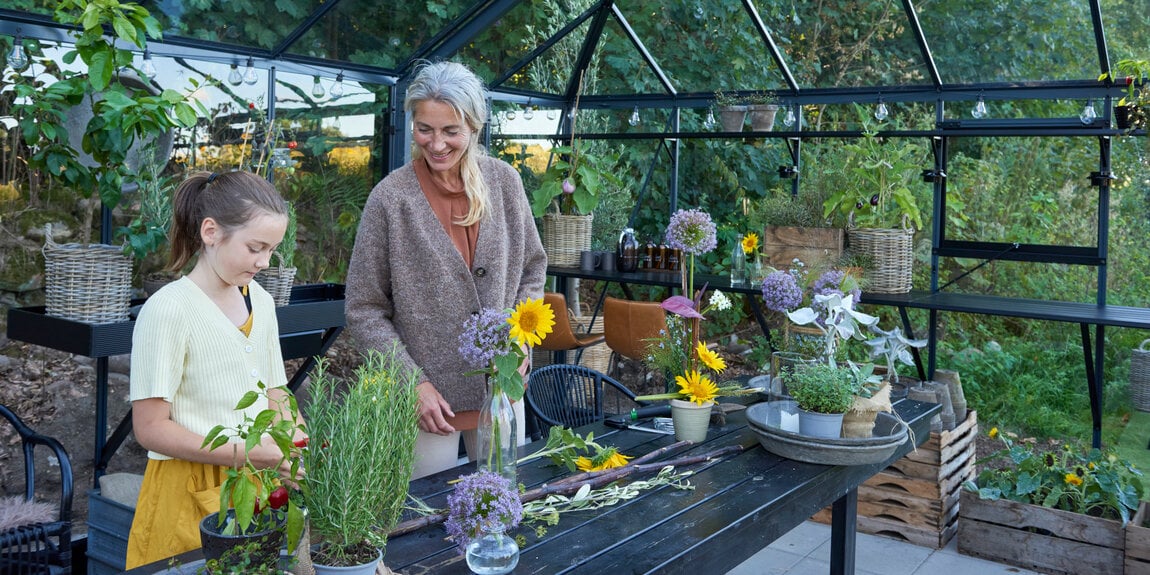
Transform Your Greenhouse Life
Are you looking for fresh inspiration to transform your greenhouse life into a lush paradise? Let's explore new ideas and tips together that will make your green haven even more magical!
JULIANA GROUP
Juliana Group is a leading global supplier of quality residential greenhouses. Founded in 1963 by Mogens A. Stærmose in Odense, Denmark, the family-owned company is today run by third generation, Nikolaj Stærmose. Headquarter and production remains Odense-based with subsidiaries in the UK and Germany and export to more than 20 countries.
’We help people grow’. That is why our brands Halls, Juliana, and Gabriel Ash all set the frame for experiences that are as natural as they are magical. Despite our long history, we’re future-focused and curious on how we can improve the sustainability of our greenhouses. Learn more about Juliana and find inspiration for life in the greenhouse in our inspirational universe.




